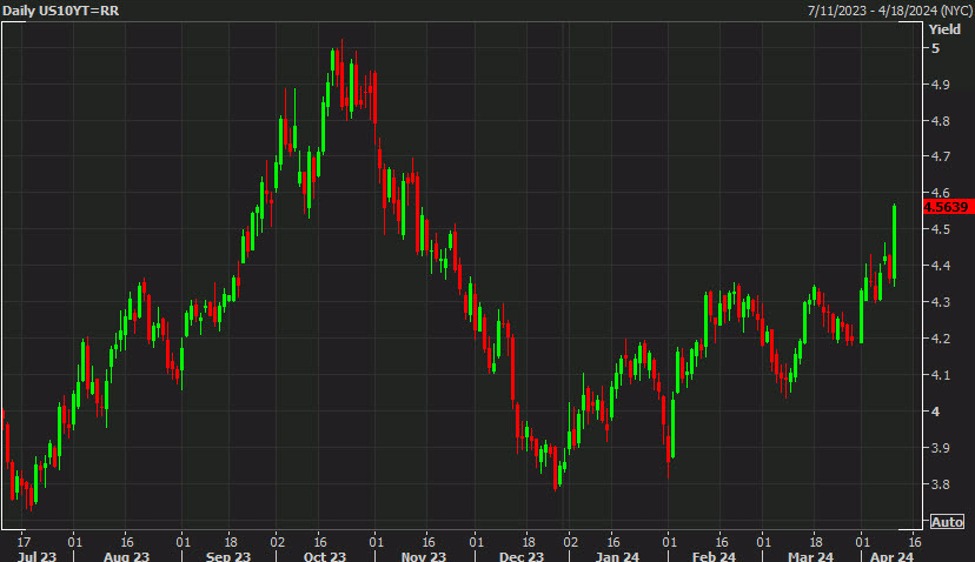What the bond market tells us about the future of the US economy

The rise in the US Consumer Price Index released today has proven costly for both investors and the US Treasury.
The $39 billion 10-year Treasury auction sold with a yield of 4.56%, up from 4.53% before the sale. A three-basis-point spread is rare, but it reflects a market that is falling back on bonds while inflation remains persistent.
US 10-year daily yields
Waiting one more day to release CPI data would have saved the U.S. government $78 million per year based on the current 20 basis point rise in 10-year yields, or $868 million compounded over the life of the bond.
That’s still a small thing for the U.S. government, but it conducts a handful of Treasury auctions each month and higher borrowing rates can quickly start to add up. Currently, the U.S. deficit is estimated to be $1.6 trillion in fiscal year 2024, rising to $1.8 trillion next year. This represents almost 7% of GDP and is one of the main reasons why US GDP and inflation are higher than the rest of the world.
My base case scenario is that we get a divided Congress following the election and the deficit becomes a much higher priority. Even if not, CHIPS and IRA spending will decline significantly in 2026, leaving the economy vulnerable.
Rising yields will also alarm the Treasury and the Fed. The FOMC took a more dovish stance when rates reached 5% in October. So I consider that a ceiling, maybe 4.80%, and that’s where the murmuring started. There is also a real effect on the economy with higher rates as mortgages and loans follow yields.
There is also the issue of divergences between the United States, which could fuel the US dollar’s gains. Inflation has fallen more in Europe, the United Kingdom and Canada than in the United States and is approaching levels that central banks can reduce. This dynamic has led to a 1-2% rise in the US dollar today, which may be just a sign of what is to come.
cnbctv18-forexlive




